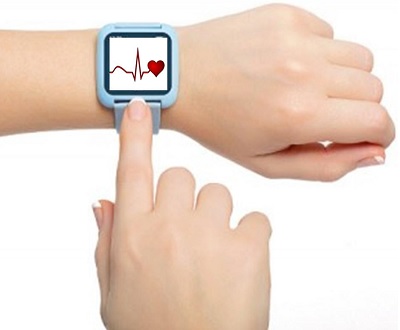Since John Hancock released its “Vitality” mobile app, the smartwatch users have been able to try for better premiums.
Recently, the John Hancock life insurance company announced that it would be using wearable technology to allow customers to prove that they are a lower risk for their coverage so that they can earn discounts, and this opportunity has now expanded to the Apple Watch.
The “Vitality” app is now Apple Watch compatible, allowing smartwatch users to prove that they live in a healthy way.
Users of the Apple Watch who are willing to share their data with regards to their fitness habits that have been gathered on their device will be able to see if their efforts can earn them a discount on their life insurance premiums. The app is also available to users of the iPhone and iPod Touch, having been based on the HealthKit platform. It has been designed to track a user’s vitals and healthy lifestyle habits.
This lets Apple Watch users prove to the life insurance company that they are a lower risk.
 This lower risk can be reflected in their premiums with a potential discount as high as 15 percent for either universal life or term life forms of the coverage (the former of which is available regionally in Delaware and Pennsylvania, whereas the latter is available exclusively in Delaware).
This lower risk can be reflected in their premiums with a potential discount as high as 15 percent for either universal life or term life forms of the coverage (the former of which is available regionally in Delaware and Pennsylvania, whereas the latter is available exclusively in Delaware).
When users show that they have lowered their blood pressure (or have maintained a healthy level over time), that they are regularly active such as by walking and/or running, and that they take care of themselves overall, the data is collected by the smartwatch. The user can then send that data to the insurer, which will add it to its premiums calculations and decide how much of a discount (if any) has been earned.
The system also works by building up “Vitality Points” by completing activities that promote better health, such as undergoing an annual health screening. These points accumulate to provide the insurer’s customers with additional benefits such as shopping, travel, and entertainment rewards from participating retailers.
Aside from the Apple Watch, other products compatible with this program include the Fitbit Activity Band. In fact, when a customer purchases this type of policy from the insurer, they can receive a Fitbit fitness tracker for free.
The wearables that people are now wearing are helping to direct the development of clinical devices.
Wearable technology has, quite suddenly, become very popular for use in the area of health and fitness tracking when it comes to consumer tech devices, and the mhealth industry is viewing this as a tremendous opportunity with regards to developing future clinical devices.
This could mean that wearables and smartphone apps, alike, could start to play an integral role in tomorrow’s health care.
Parks Associates research has indicated that about 30 percent of homes in the United States that have broadband connections already have some form of connected device that can be used for health purposes. It has also estimated that by the end of next year, there will be over 32 million American consumers who will be actively tracking their fitness and health either by way of wearable technology or another form of mobile device.
Equally, using wearable technology devices within the mobile health field has also been on the rise.
 Director of health and mobile product research at Parks Associates, Harry Wang, explained that as popular as wearables are becoming, they are also starting to stand out within the health and medical industries. These gadgets are being seen as a wonderful opportunity for mhealth uses, such as monitoring vital signs (like blood pressure or insulin levels), which can be very helpful for improving health care access and quality.
Director of health and mobile product research at Parks Associates, Harry Wang, explained that as popular as wearables are becoming, they are also starting to stand out within the health and medical industries. These gadgets are being seen as a wonderful opportunity for mhealth uses, such as monitoring vital signs (like blood pressure or insulin levels), which can be very helpful for improving health care access and quality.
In an article that he wrote for the Digital Health News published by his firm, Wang explained that “the design trends for wearables in the medical field follow what is happening in the fitness area — they are becoming more discreet, with more user-centric designs and highly integrated functions.”
As consumers become more confident with their mobile devices, they are also starting to look to additional gadgets, such as those in the wearable technology category, to provide them with more practical and usable benefits. This opens up a world of opportunity for creating devices and supporting apps that will allow people to take greater control of their own wellness and to provide their doctors with additional data for a more accurate understanding of their overall condition, as opposed to what is exclusively available through a doctor’s appointment.
 This lower risk can be reflected in their premiums with a potential discount as high as 15 percent for either universal life or term life forms of the coverage (the former of which is available regionally in Delaware and Pennsylvania, whereas the latter is available exclusively in Delaware).
This lower risk can be reflected in their premiums with a potential discount as high as 15 percent for either universal life or term life forms of the coverage (the former of which is available regionally in Delaware and Pennsylvania, whereas the latter is available exclusively in Delaware).
